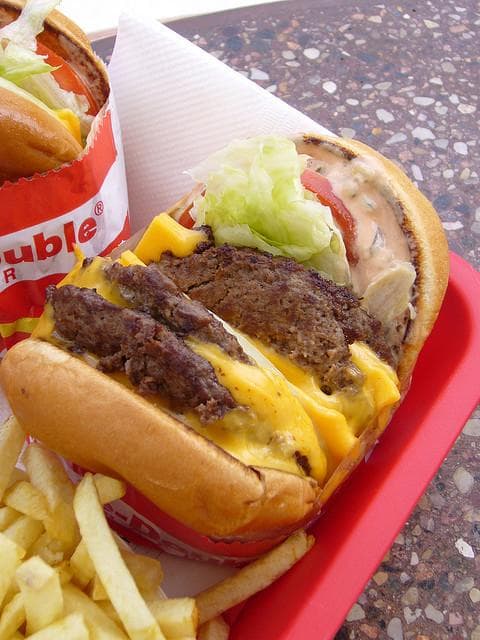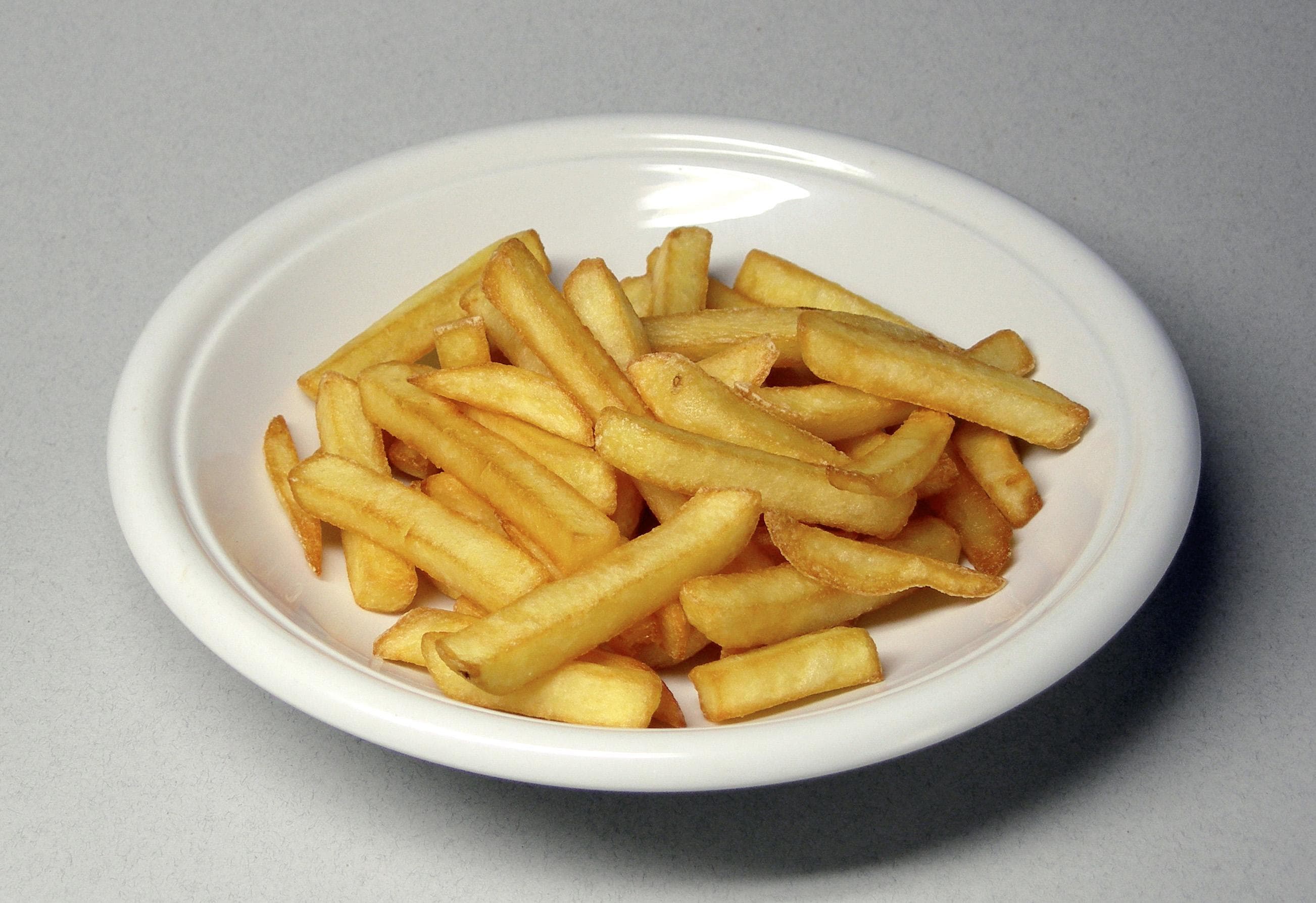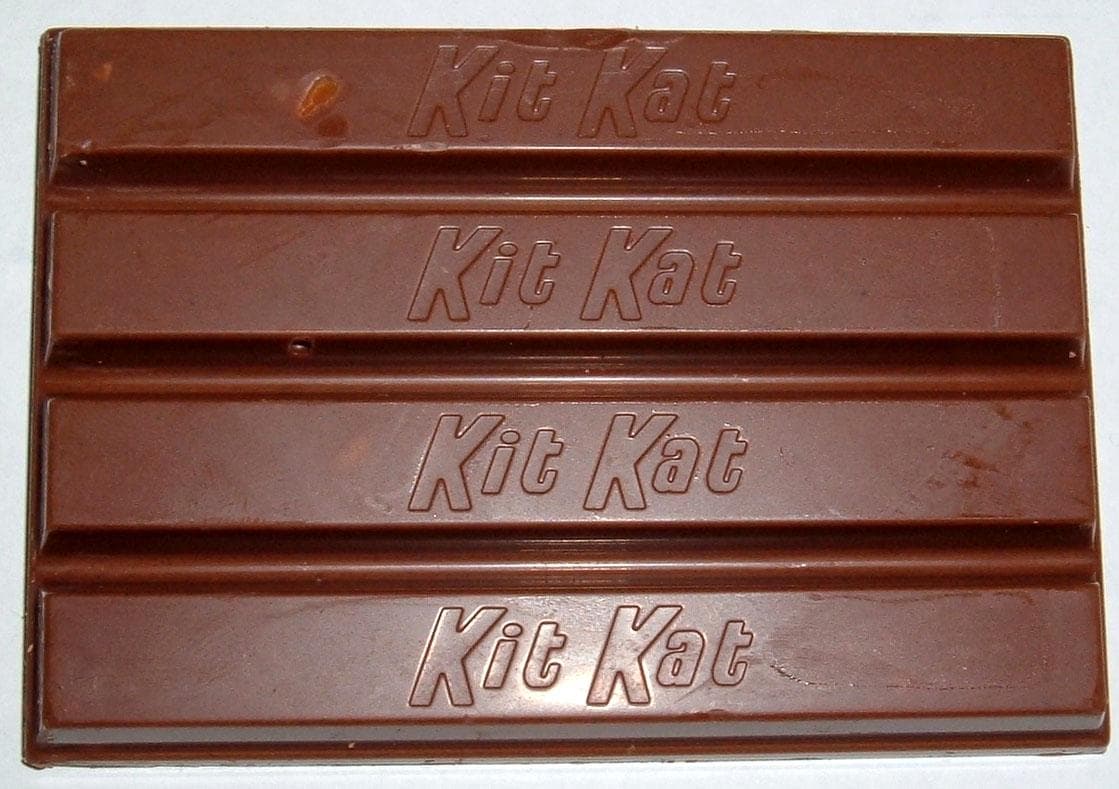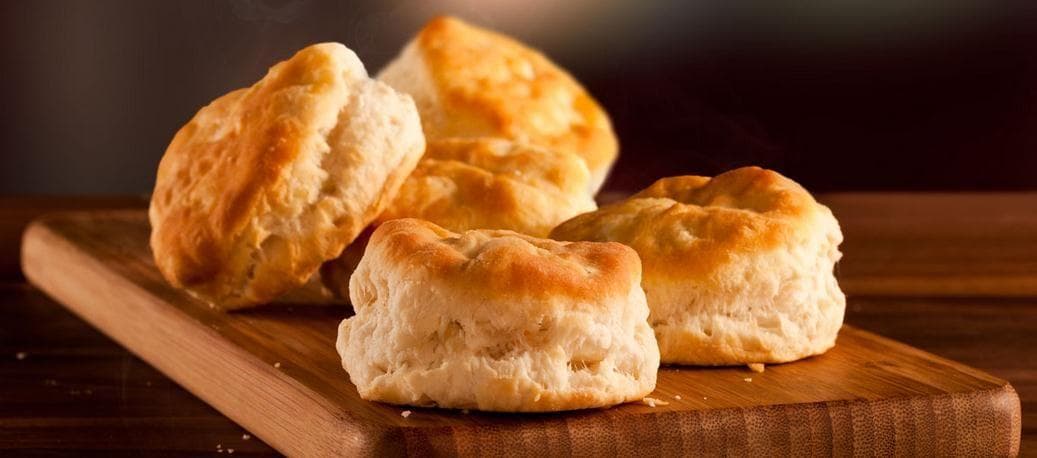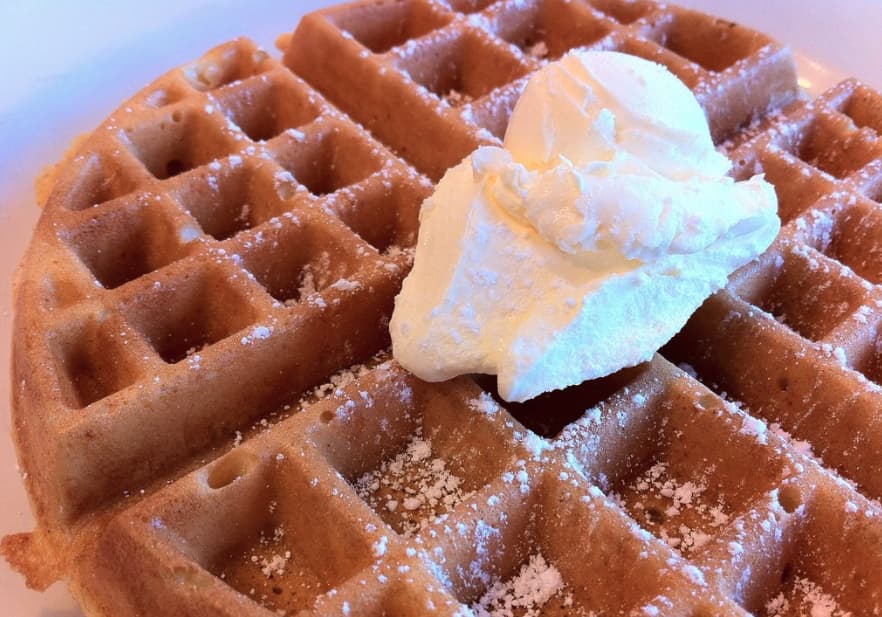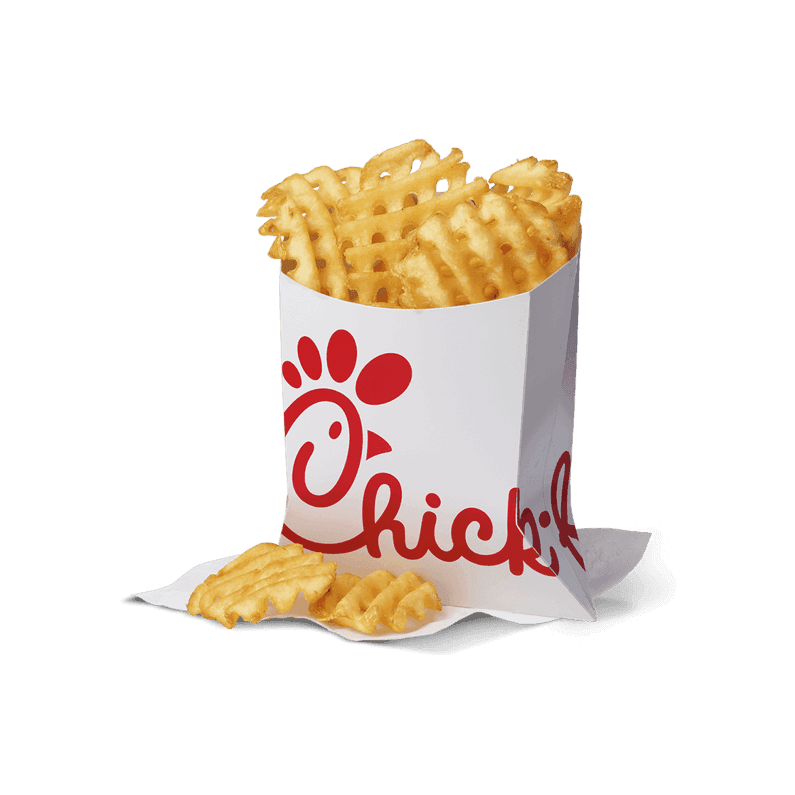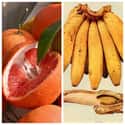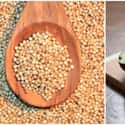-
(#6) 1950s: Cabbage Soup And Apple Cider Vinegar
The cabbage soup diet may have appeared before the 1950s, but after that decade, it continued to enter the fad food landscape every few years. Called many things, including the Dolly Parton Diet and the Fat Burning Diet, the cabbage soup diet was intended for short-term weight loss. Individuals ate as much cabbage soup as they wanted alongside limited amounts of fruit, vegetables, meats, and grains. The diet lasts one week and is meant to limit calories for a 10- to 17-pound weight loss.
Another healthy food that claimed to cleanse the body and cure ailments was apple cider vinegar. Again, not an original concept - Lord Byron touted apple cider vinegar as a weight loss tool during the early 1800s - apple cider vinegar found new life in D.C. Jarvis's book Folk Medicine, which was published in 1958.
-
(#5) 1940s: Rationing, Lemon Juice, And Cayenne Pepper
Rationing played a heavy role in the foods people around the world ate during the 1940s. Limited by what was grown in one's garden, meals were made without meat, sugar, eggs, and other resources once eaten in abundance. A more plant-based diet lined up with the discovery of the Mediterranean diet during the 1950s, an eating plan that embraced lower fat content combined with less meat and dairy and more grains, fruits, and vegetables in the interest of reducing heart disease.
There were food trends that claimed to detoxify the body, most notably the lemon and cayenne pepper cleanse introduced by Stanley Burroughs in 1941. The master cleanse, as it was known, included "the juice of one-half lemon or whole small lime... and two tablespoons of sweetening to an eight-ounce glass of medium hot water." Molasses was primarily used as a sweetener because of its laxative effect, but maple syrup and sorghum were also options. The next step involved adding cayenne pepper to give it "an additional lift and... break up mucous and stimulate increased elimination of the toxins."
Burroughs touted the mixture as a cure for illness, something that could give the digestive system a rest, and a means to weight loss. Burroughs advocated trying the diet a few times a year, with periods of use up to 40 days as needed.
-
(#4) 1930s: Grapefruit, Bananas, And Seaweed
The grapefruit diet, a fad that has reappeared several times in history, was practiced as early as the 1930s. Also known as the Hollywood diet, the eating plan was thought up by William H. Hay who believed grapefruit contained fat-burning enzymes. Hay's diet called for proteins, fats, and starches to be eaten separately but also limited the types of foods people could eat. As a low-calorie food, grapefruit was also high in vitamin C and fiber, making it an ideal staple food for losing weight.
During the 1930s, bananas took the United States by storm. Companies like the United Fruit Company (better known as Chiquita) sold their fruit as a nutritious and delicious food that was good for people of all ages, later going so far as to instruct people how to store and eat them. In 1934, bananas were combined with milk for a doctor-approved anti-diabetes diet, one that was low in calories but failed to give people enough nutrients to survive.
Other low-calorie diets featured seaweed and a drink mix that combined powdered protein with chocolate, starch, wheat, and bran. Called Dr. Stoll's Diet Aid, the product was one of the first diet drinks to enter the market.
-
(#10) 1990: Blueberries, Slimfast, And Snackwells
The fat-free craze extended into the 1990s, perhaps eclipsing the 1980s with widespread production of low-fat products like Slimfast and Snackwells. Introduced in 1977, Slimfast was part of a meal plan that called for a shake for breakfast, one for lunch, and then a sensible dinner. Slimfast is still available and people continue to follow the plan, but it reached the height of its success in the 1990s. You can also still find Snackwells on the grocery store shelf but in far fewer numbers. In the early 1990s, Nabisco introduced the Snackwells line of fat-free cookies and crackers. Touted to be guilt-free as well, Snackwells met the needs of consumers averse to fat.
Even McDonalds got in on the low-fat bandwagon, adding the McLean Deluxe to its menu. The McLean Deluxe was a lighter burger with seaweed extract mixed in to keep the leaner meat moist.
According to the former editor of Appetite magazine and professor of psychology at the University of Pennsylvania, Paul Oozin, "fat was oversold as public enemy number one." Michael Pollan, food author and expert, agreed, stating that the "low-fat campaign had oversimplified science." Even the food pyramid released in 1992 indicated fats were to be avoided.
While the gift of hindsight allows for such assessments, food trends during the 1990s didn't only involve low-fat options. During the last decade of the 20th century, the Atkins Diet experienced a resurgence and became immensely popular with the release of an updated Dr. Atkins' Easy New Diet Revolution in 1997.
An additional food trend included the discovery and endorsement of antioxidant foods, namely blueberries. During the 1990s, blueberries were found to be one of the top foods to contain antioxidants, and they also featured numerous vitamins and minerals.
-
(#2) 1910s: Fruit, Vegetables, Milk, And Calorie Counts
With the discovery of vitamins in 1912, people began to look at food differently. As a result, fruits, vegetables, and milk - all rich in vitamins - were favored over other foods that were not considered as full of nutrients. As researchers such as Casimir Funk and Frederick Hopkins put forward ideas about the best foods for health and flourishing, people responded by adopting more vitamin-rich foods into their diets. The identification of vitamins B1, B2, C, and D and their connections to disease prevention and cures were combined with necessary food rationing during WWI, making "nutrition...a political issue" as well.
The increased understanding of how food contributed to the human body also led to the idea of the calorie. Scientific understanding of calories began during the early to mid-19th century, but when Lulu Hunt Peters published Diet and Health With Key to the Calories in 1918, it was full of guidelines about how many calories to eat in a day. The best seller explained which foods to eat with details on how much fat, protein, carbohydrates, and minerals went into daily meals. The book promised that people could eat what they liked "and grow thin" with persistence, effort, and most importantly, the knowledge of what was making them gain weight to begin with.
-
(#12) 2010s: Gluten-Free Everything, Quinoa, Paleo, And Avocado
Within the 2010s, food trends increasingly geared towards what is left out of food rather than what is in it. Gluten-free diets emphasize having foods that don't have gluten, a protein found in grains like wheat, rye, and barley. Gluten can be particularly problematic for individuals suffering from celiac disease and wheat allergies, but many people believe it has connections to other ailments, such as depression and obesity. There's little scientific evidence to support the latter claims or that a gluten-free diet promotes weight loss, but the research community is still investigating and discovering more about this protein.
The gluten-free trend has pushed consumers and healthy eaters to different foodstuffs, most notably quinoa. The grain originating in Peru, Bolivia, and other parts of South America has been eaten for centuries but only relatively recently became popular in North America. Quinoa is high in fiber and protein and considered an incredibly versatile superfood.
There have also been diets that advocate avoiding carbs and grains altogether. The paleo diet, another low-carb eating plan, is based on what people are thought to have eaten 2.5 million to 10,000 years ago during the Paleolithic era. Also called the Caveman Diet, it is largely composed of nuts, seeds, fruits, vegetables, and lean meats; the diet leaves out processed foods, dairy, and other products that came about from the cultivation that began during the Neolithic period.
Avocados have also seen a surge of newfound popularity, as avocados are full of healthy fats. When it comes to consumers and healthy eaters, even those who don't eat like ancient humans, avocados provide a low-sugar, nutrient-rich option that adds creaminess to smoothies, makes for a good snack, and can be used in a variety of dishes.
New Random Displays Display All By Ranking
About This Tool
As we all know, nuts are healthy food. But many people still think that nuts are high in calories and fat. In fact, most of the fat contained in nuts is unsaturated fatty acids, which are good for the heart and are not easy to gain weight. Among the many snacks, nuts have always been one of the healthy snacks recommended by nutritionists. Nuts are generally divided into two categories, seed nuts, and tree nuts.
Nuts are the essence of plants, with comprehensive and rich nutrition. More and more healthy nuts are popular all over the world. There are random 12 healthy nuts in every decade since the turn of the 20th century.
Our data comes from Ranker, If you want to participate in the ranking of items displayed on this page, please click here.



